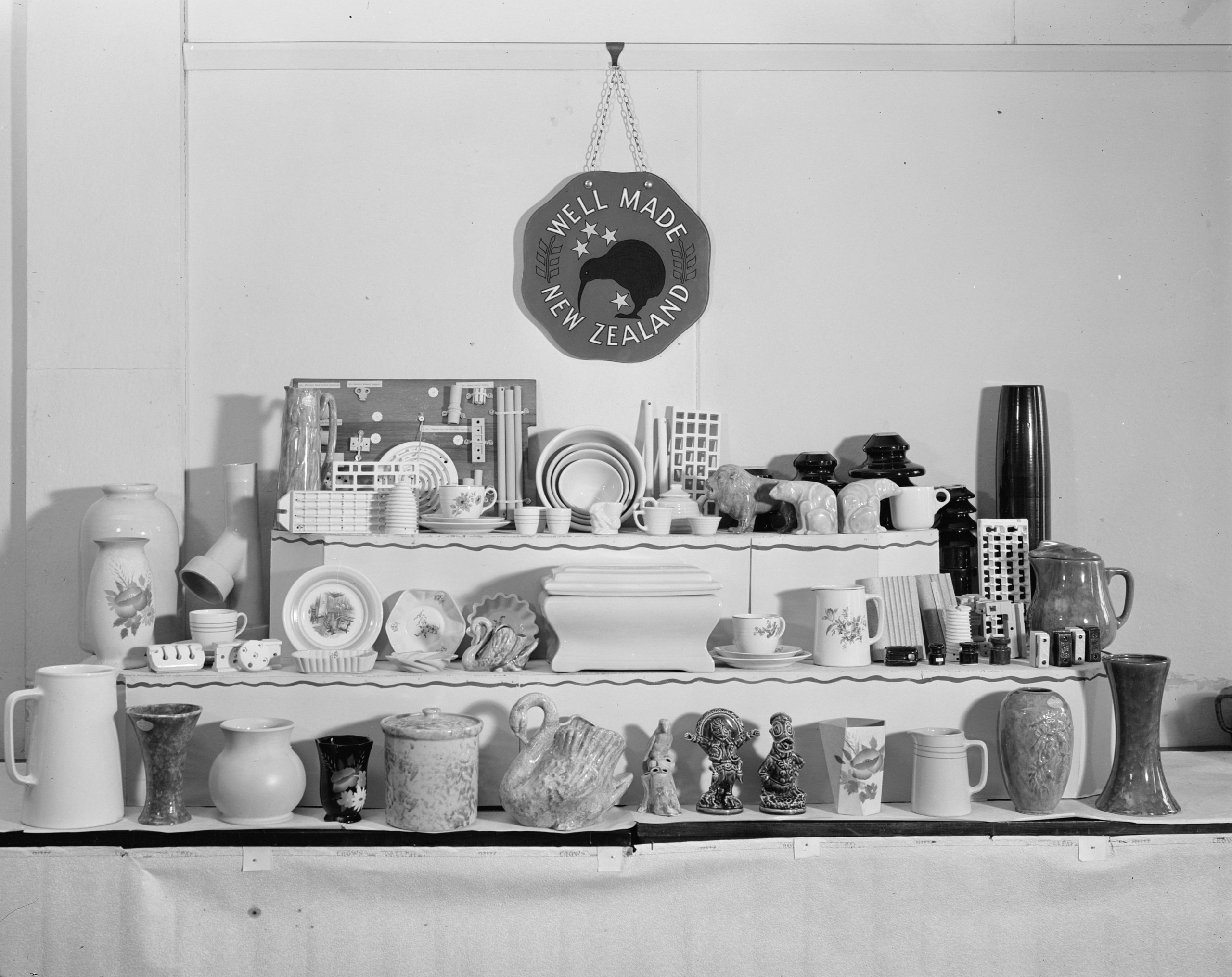
New Zealand ceramics exhibit, Wellington – Photograph taken by Walker and Wilson. National Publicity Studios. June 1948. Tourist and Publicity Collection. Ref: 1/2-034175-F. Alexander Turnbull Library, Wellington, New Zealand.
Alexander Turnbull Library | National Library of New Zealand | Te Puna MÄTauranga o Aotearoa
www.natlib.govt.nz
Heritage
We are continuing the journey of making these pieces for you to collect. They are so popular they outlast the makers and will endure for yearsto come.
New Zealand’s ceramic industry was once a powerhouse. It all began with Crown Lynn, a name synonymous with quality and craftsmanship. Crown Lynn, once the largest ceramic factory in the southern hemisphere, shaped an era of creativity and innovation.
In 1925, a group of West Auckland brick and pipe manufacturers united to form the Amalgamated Brick and Pipe Company, centralising operations in New Lynn. Tom Clark, son of managing director Tomas Edwin Clair, joined the fiarm as a labourer during the Depression in the 1930’s and soon led a move to diversify into items more high-value than bricks and pipes. Thus the “Special Department” was born – at first making hexagonal dry-pressed, porcelain tiles and electrical components.
In the very early 1940s’, Clair and his colleague Ray Ockleston began making household ware, which required completely different techniques and raw materials. By 1942, the factory was making domestic ware on a general scale. While production was still experimental, the US Army ordered thousands of bowls and mugs for their troops stationed in the South Pacific during the Second World War. This ware was decorated with the trickle-glaze technique, which soon became a Crown Lynn signature. In the mid 1940’s, the company first started using the name ‘Ambrico’, a combination of the initials of the parent company, Amalgamated Brick and Pipe Company.
The English staff and new materials and techniques enabled the factory to produce ware that was hand-decorated with gold and imported lithographs. This signalled a move from more utilitarian pieces, and a design department under New Zealander David Jenkin was established in 1948. By this time, half of Crown Lynn’s production was exported to Australia. But changes to the Australian exchange rate triggered a slump in export markets and the company struggled to survive. The employment of specialist hand potters such as Ernest Shufflebotham, Daniel Steenstra and Mirek Smisek, and innovative decorator Frank Carpay helped keep the business afloat.
Crown Lynn takes off
Towards the end of the 1950’s the market expanded again, partially due to government imposed import restrictions, and Crown Lynn grew rapidly, gaining a near monopoly in New Zealand. It was in the early 1960’s that Crown Lynn took off. Previously, hand- decorating
with imported lithographs or hand painting with gold or coloured bands had been the norm, but now new machinery and techniques allowed for more use of New Zealand designs, automated decoration and faster production. Importantly, new Murray Curvex machines
allowed home-grown designs to be printed directly onto plates and other flatware. Production soared and the company exported to the Pacific Islands, Australia, North America and South Africa. Backstamps were proudly New Zealand, rather than the ‘British’ series of the 1950’s. Through the 1960’s, manufacturing continued to increase and by the 1970’s Crown Lynn had reached its highest output, with around 500 staff turning out 15 million pieces a year. The export market, especially in Australia, was in good heart. The Crown Lynn group began to expand and in 1973 owned around 50 subsidiary companies. In 1974, the ever growing conglomerate was named Ceramco, although the Crown Lynn brand was retained.
But both domestic and overseas markets weakened as the 1980’s’ economic downturn bit deeper and the government lifted the import restrictions. Despite the best efforts of staff, sales continued to decline and workers were laid off. Much of the surplus product was sold in a network of 12 Crown Lynn second shops. However, production continued. In September 1988, an international newsletter warned that warehouses were overstocked by one million pieces. Nevertheless, the factory was continuing to make 600,000 pieces a month. In May 1989, the remaining 220 staff were told the factory was to close. Machinery was packed up and sent to Malaysia, and the factory site was bulldozed and sold.
Champions Emerge
When the doors of the Crown Lynn factory in New Lynn, Auckland, closed in 1989, a treasure trove of history was scattered far and wide. But champions emerged to safeguard this heritage. Catherine Anselmi and Bruce Yallop played pivotal roles in keeping a collection of beloved shapes alive, even amidst the challenges of factory closure. You can read Catherine’s journey here: http://catherineanselmi.com/portfolio/crown-lynn/?portfolioCats=26
Studio Ceramics continued this legacy in West Auckland, with a team that included Christine Harris’s designs and evolved through collaborations with various artists. In 2006, an iconic forrest, fauna, and foreshore range, designed by Bruce Yallop, captured the essence of New Zealand’s natural beauty.
In 2017, Studio Ceramics closed its doors after a challenging decade but Mathew Nisbet stepped in, acquiring a valuable collection of molds molds, creating Crownlynn.kiwi and recommencing the making and sales through gift stores in New Zealand and online.
Our vision is to make new editions of iconic New Zealand ceramics, deter fakes, provide local employment and establish a gallery.
Excellent sources of the history of New Zealand ceramics and pottery visit:
Te Toi Uku – The Crown Lynn and Clayworks Museum www.tetoiuku.org.nz
Te Papa – The Museum of Aotearoa – www.tepapa.govt.nz
The publications of Val Monk, and Gail Henry
Crown Lynn – gone yet still going forward!
Enter Catherine Anselmi.
You can read about how Catherine’s work and journey here.
Crown Lynn – the Future
The Collection on this site are now owned by Mathew Nisbet, produced under the Stepa.NZ since the closure of Studio Ceramics in 2017. Crownlynn.kiwi is a venture focusing on building a central collection of historic moulds to be passed forward, encouraging new work from profits.
The Legacy Forward page explains our project target to pass this collection ahead for generations.
IF WE LOVE IT AND PRESERVE IT – IT BECOMES A HISTORY. IF WE HONOUR THIS, IMPROVING AND ADDING, LEARNING FROM OUR PAST IT BECOMES A TRADITON.
